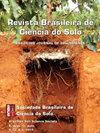Urban soils in Brazil: A review
IF 2
4区 农林科学
Q3 SOIL SCIENCE
引用次数: 1
Abstract
This study analyzes the scientific production about soils within cities in Brazil, the most populous country of Latin America, to highlight significant patterns and contributions and point out gaps and future challenges. A more robust literature about urban soils in Brazil started in the 90 ́s decade and has intensified since 2015. Papers are mostly published in Portuguese, majority performed in cities with more than 500,000 inhabitants, many of them located in the Southern and Southeastern regions, and mainly focused on soil characterization, classification, mapping and/or contamination. Important methodological propositions (related to classification and land potential) and morphological, physical and chemical results are published. Urban soils formed from landfills are the most common, but soils developed from irregular zones of waste disposals are also frequent, showing the deficiency of proper waste management in developing countries. Properties such as pH, base saturation, soil organic matter and P amounts tend to be higher in soils marked by the addition of earthy materials and solid waste than in soils developed from the process of cutting, which commonly exposes the acid and deep saprolite of the tropical and subtropical zones. Although the attention on the Brazilian urban soils has grown in the last years, more studies, with a higher variety of morphological and analytical data, still have to be performed to obtain more representative results. Systematization of concepts, terminologies, and methodologies is also necessary, allowing a more complete understanding of the soils. In addition, the incorporation of a classification key of Anthropogenic soils, including urban soils, in the Brazilian official classification system seems urgent. Finally, it is relevant to foment international publications about the Brazilian urban soils, allowing a wider comparison between the produced data and the results obtained worldwide.巴西城市土壤:综述
本研究分析了拉丁美洲人口最多的国家巴西城市土壤的科学成果,以突出重要的模式和贡献,并指出差距和未来的挑战。关于巴西城市土壤的更有力的文献始于90年代,自2015年以来得到了加强。论文大多以葡萄牙语发表,大多数在人口超过50万的城市进行,其中许多位于南部和东南部地区,主要集中在土壤特征、分类、制图和/或污染方面。发表了重要的方法论命题(与分类和土地潜力有关)和形态学、物理和化学结果。由垃圾填埋场形成的城市土壤是最常见的,但从不规则的废物处置区形成的土壤也很常见,这表明发展中国家缺乏适当的废物管理。土壤的pH值、碱基饱和度、土壤有机质和磷含量等特性在添加了土质物质和固体废物的土壤中往往高于在采伐过程中形成的土壤,采伐过程通常暴露热带和亚热带地区的酸性和深层腐岩。尽管近年来对巴西城市土壤的关注有所增加,但为了获得更具代表性的结果,还需要进行更多的研究,使用更多种类的形态学和分析数据。对概念、术语和方法的系统化也是必要的,以便对土壤有更全面的了解。此外,在巴西官方分类系统中纳入人为土壤(包括城市土壤)的分类钥匙似乎迫在眉睫。最后,它与推动关于巴西城市土壤的国际出版物有关,允许在产生的数据和世界范围内获得的结果之间进行更广泛的比较。
本文章由计算机程序翻译,如有差异,请以英文原文为准。
求助全文
约1分钟内获得全文
求助全文
来源期刊

Revista Brasileira De Ciencia Do Solo
农林科学-土壤科学
CiteScore
3.00
自引率
11.80%
发文量
32
审稿时长
9-24 weeks
期刊介绍:
The Revista Brasileira de Ciência do Solo is a scientific journal published by the Brazilian Society for Soil Science (SBCS), founded in 1947, and is responsible for the propagation of original and inedited technical-scientific work of interest for Soil Science.
Contributions must not have been previously published or submit to other periodicals, with the only exception of articles presented in summarized form at professional meetings. Literature reviews are accepted when solicited by the Editorial Board.
 求助内容:
求助内容: 应助结果提醒方式:
应助结果提醒方式:


